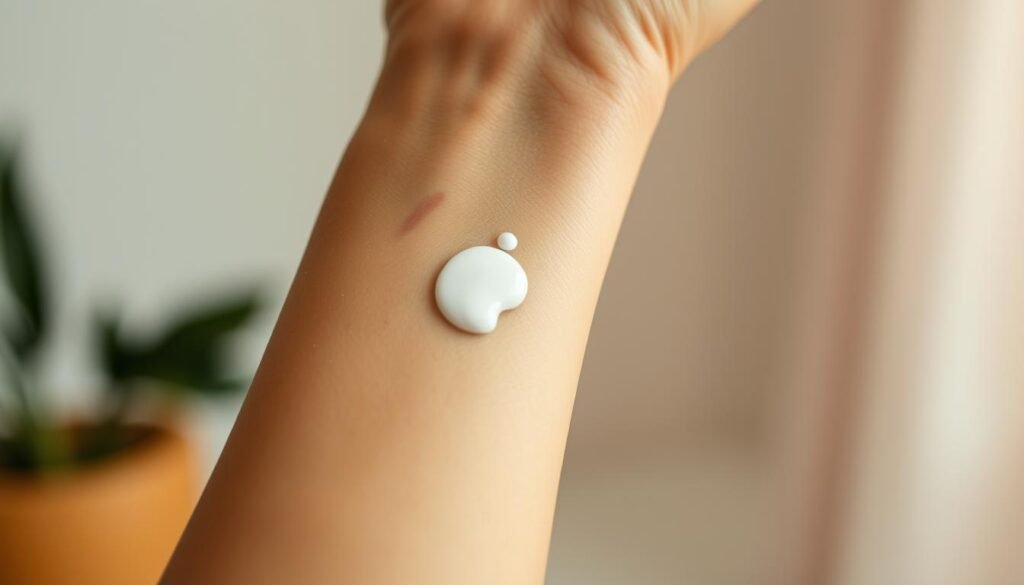Have you ever struggled with unwanted discoloration on your skin, affecting your confidence and overall appearance? You’re not alone. Hyperpigmentation, a condition characterized by the overproduction of melanin, is a common concern for many individuals.
Various factors contribute to the development of these unsightly patches, including prolonged sun exposure, hormonal fluctuations, and post-inflammatory responses. To address this issue, it’s essential to understand the underlying causes and explore effective treatment options.
Key Takeaways
- Hyperpigmentation is a common condition affecting people of all skin types and ages.
- Excess melanin production leads to the formation of unwanted discoloration.
- Understanding the causes is crucial for selecting the most effective treatment approach.
- Various treatment options are available, including medical treatments and home remedies.
- Prevention strategies can help reduce the appearance of hyperpigmentation.
Understanding Dark Spots on Skin
Dark spots on the skin can be a source of concern for many individuals, affecting their self-esteem and overall skin health. These spots, also known as hyperpigmentation, are areas of skin that appear darker than the surrounding tissue due to excess melanin production.
What Are Dark Spots?
Dark spots, or hyperpigmentation, can vary significantly in their appearance. They can range from light to dark brown or gray-brown, depending on the individual’s skin tone and the underlying cause. Age spots, one type of dark spot, typically appear on sun-exposed areas like the face, hands, shoulders, and back. Post-inflammatory hyperpigmentation, another common cause, often develops after skin inflammation from conditions like acne, eczema, or injuries.
The characteristics of dark spots can vary widely based on their cause and the individual’s skin characteristics. Understanding the specific type of dark spot is crucial for determining the most effective treatment approach.
| Causes | Characteristics | Common Areas Affected |
|---|---|---|
| Age Spots | Light to dark brown | Face, hands, shoulders, back |
| Post-inflammatory Hyperpigmentation | Dark brown or gray-brown | Any area, especially with skin issues |
Common Locations for Dark Spots
Dark spots can develop on any part of the body but are more common in certain areas. Age spots are most frequently found in areas with frequent sun exposure, such as the back of the hands, face (particularly the forehead, upper lip, and chin), back, and shoulders. On the other hand, dark spots due to post-inflammatory hyperpigmentation can occur anywhere on the body but may be more likely to affect areas with other skin issues, such as acne or eczema.
As noted by a dermatology expert, “Understanding the cause of dark spots is key to treating them effectively.” This emphasizes the importance of identifying the underlying reason for the appearance of dark spots to choose the right treatment.
Main Causes of Dark Spots
Several factors contribute to the development of dark spots on the skin. These spots can appear due to a combination of environmental, hormonal, and genetic factors.
Sun Damage and UV Exposure
UV exposure is a primary cause of dark spots, triggering excess melanin production as the skin‘s defense mechanism against sun damage. Prolonged exposure to UV rays can lead to the formation of sunspots, also known as solar lentigines or liver spots, particularly in areas frequently exposed to the sun.
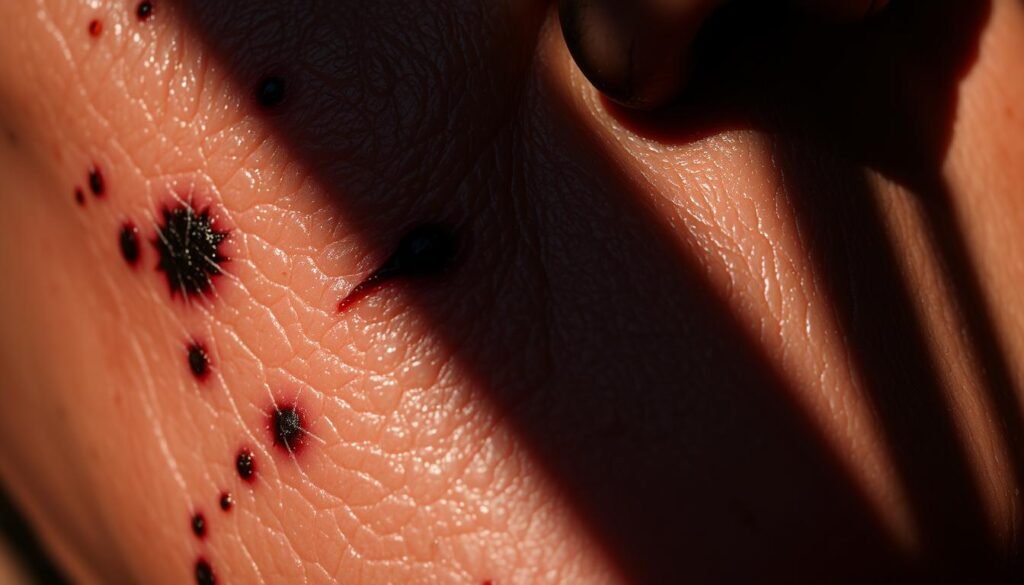
Hormonal Changes and Melasma
Hormonal fluctuations during pregnancy, menopause, or due to the use of birth control can trigger melasma, characterized by symmetrical patches on the face. These changes can lead to an increase in melanin production, resulting in dark spots.
Post-Inflammatory Hyperpigmentation
Post-inflammatory hyperpigmentation develops after skin inflammation from acne, eczema, psoriasis, or physical injuries to the skin. This condition leads to the formation of dark spots as the skin heals.
Medication Side Effects and Other Causes
Certain medications, including antibiotics, chemotherapy drugs, and antimalarials, can trigger hyperpigmentation as a side effect. Additionally, conditions like diabetes can cause specific types of skin discoloration through various mechanisms. According to a study published on the National Institutes of Health website, certain medical conditions can lead to skin, emphasizing the importance of understanding the underlying cause of dark spots.
The main causes of dark spots can be summarized as follows:
- UV exposure leading to excess melanin production
- Hormonal changes triggering melasma
- Post-inflammatory hyperpigmentation from skin inflammation
- Medication side effects and other medical conditions
Medical Treatments for Dark Spots
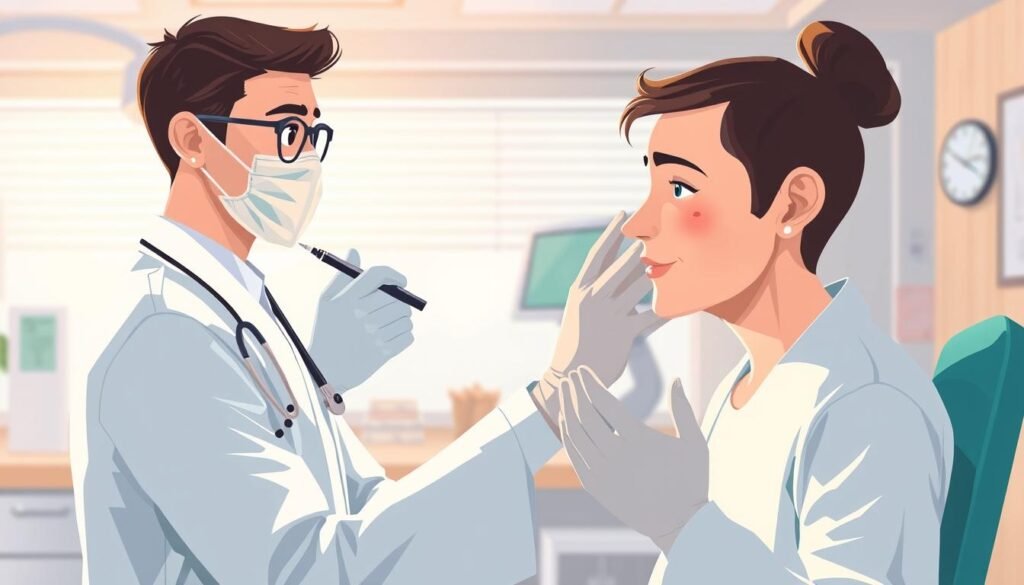
Medical treatments offer a range of possibilities for reducing the appearance of dark spots on the skin. A dermatologist can offer creams or procedures to lighten dark spots or, in some cases, remove them. Procedures are more expensive than creams and are more likely to cause side effects, though they tend to work faster.
Prescription Skin-Lightening Creams
Prescription-strength hydroquinone (4% or higher) remains the gold standard for medical treatment of hyperpigmentation by inhibiting melanin production. These creams can be effective in lightening dark spots, but it’s essential to follow a dermatologist’s guidance to minimize potential side effects.
Chemical Peels and Microdermabrasion
Chemical peels containing glycolic, salicylic, or trichloroacetic acid remove damaged skin layers to reveal fresher, more evenly toned skin beneath. Microdermabrasion physically exfoliates the skin’s surface using tiny crystals, stimulating cell turnover and collagen production. For more information on these treatments, you can learn more about laser energy treatments that can complement these procedures.
Laser Therapy and Intense Pulsed Light
Laser treatments target melanin specifically, breaking down pigment particles without damaging surrounding tissue. Intense Pulsed Light (IPL) therapy uses multiple wavelengths to treat larger areas of discoloration with minimal downtime. These treatments can be highly effective for reducing the appearance of dark spots.
Cryotherapy
Cryotherapy freezes affected skin cells with liquid nitrogen, causing them to slough off and be replaced by new, unpigmented cells. This treatment can be effective for certain types of dark spots, but it should be performed by a qualified dermatologist to minimize risks.
It’s crucial to consult with a qualified dermatologist to determine the best course of treatment for your specific skin concerns. They can help you navigate the various options and create a personalized treatment plan.
Effective Home Remedies for Dark Spots
For those looking for non-prescription solutions, over-the-counter treatments can be a good starting point. Dark spots, also known as hyperpigmentation, can be challenging to eliminate, but various home remedies have shown promise in reducing their appearance.
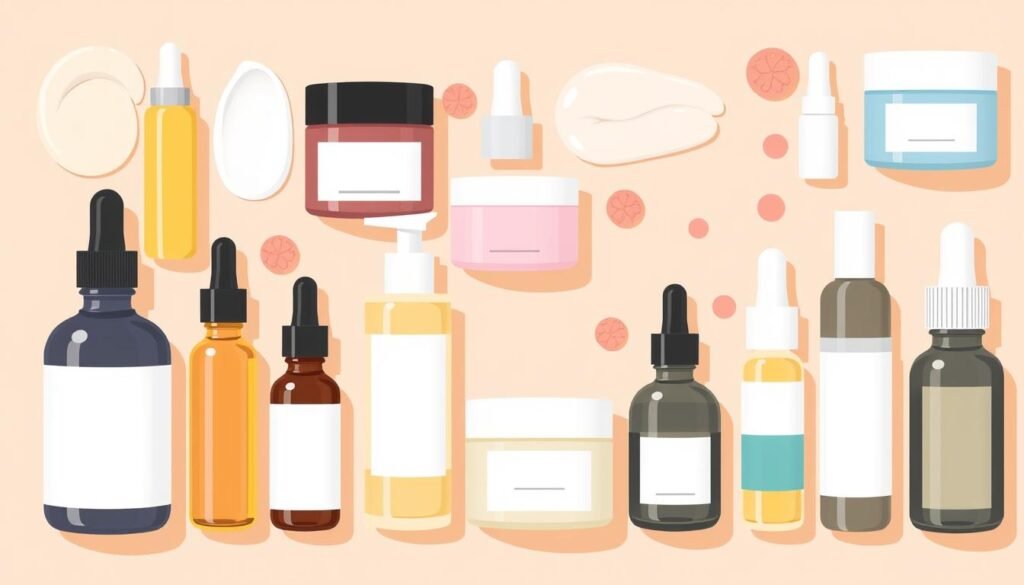
Over-the-Counter Creams and Serums
Over-the-counter (OTC) creams and serums are popular for treating dark spots. These products contain various ingredients such as azelaic acid, retinol, or alpha hydroxy acid, which can help lighten skin patches.
OTC products containing key ingredients like hydroquinone (under 2%), kojic acid, azelaic acid, and glycolic acid can effectively reduce hyperpigmentation with consistent use.
Natural Ingredients That Lighten Dark Spots
Certain natural ingredients have been found to help lighten dark spots on the skin. These include extracts from the Aloe curacao herb, licorice root, and curcumin, as well as vitamin C, niacinamide, soy, mulberry extract, and green tea extract.
Vitamin C and Niacinamide
Vitamin C serums not only brighten skin but also inhibit melanin production and provide antioxidant protection against further damage. Niacinamide (vitamin B3) reduces the transfer of melanin to skin cells and has anti-inflammatory properties that help fade existing dark spots.
Alpha Hydroxy Acids and Retinol
Alpha hydroxy acids (glycolic, lactic) and retinol accelerate cell turnover, helping to shed pigmented cells and reveal fresher skin underneath. These ingredients are key in many OTC treatments for dark spots.
DIY Treatments and Their Effectiveness
DIY remedies using ingredients like apple cider vinegar, aloe vera, and yogurt may provide modest benefits through gentle exfoliation and anti-inflammatory effects. While these remedies can be helpful, it’s essential to be cautious and patient, as results may vary.
What to Avoid When Treating Dark Spots
It’s crucial to avoid harsh ingredients like lemon juice, baking soda, or high-concentration hydrogen peroxide, as they can irritate skin and worsen hyperpigmentation. Consistency is key with home treatments, as visible results typically require 4-12 weeks of regular application.
Prevention Strategies for Dark Spots
Adopting a proactive approach to skin care, including daily sun protection and gentle skincare routines, can significantly reduce the risk of developing dark spots. While some causes, such as hormonal changes, are unavoidable, many preventive measures can be taken to minimize the occurrence and darkening of dark spots.
Daily Sun Protection Habits
Daily sun protection is crucial in preventing dark spots. Apply a broad-spectrum sunscreen with SPF 30 or higher every day, even on cloudy days, to protect your skin from UV damage. Reapply every two hours when outdoors and after swimming or sweating. Supplementing sunscreen with physical barriers like wide-brimmed hats and UV-protective clothing can further protect your skin. Avoiding the sun during peak hours (10 a.m. to 4 p.m.) is also advisable.
Skin Care Routine Adjustments
Incorporating antioxidants like vitamin C into your morning skincare routine can help neutralize free radicals caused by UV exposure and pollution. Choosing gentle, non-irritating skincare products is essential, as harsh products can trigger inflammation, leading to post-inflammatory hyperpigmentation. Consider using products containing niacinamide, which can help improve skin hyperpigmentation.
Lifestyle Changes That Help
Treating underlying skin conditions promptly, such as acne, can prevent inflammation that leads to dark spots. For those prone to hyperpigmentation, preventive use of ingredients like vitamin C and niacinamide can be beneficial even before dark spots appear. For more information on skin care and prevention, visiting a professional site like Total Body Skin Cancer Exam can provide valuable insights.
| Prevention Strategy | Description | Benefits |
|---|---|---|
| Daily Sun Protection | Use SPF 30+ sunscreen daily and reapply every two hours when outdoors. | Prevents UV damage and dark spot formation |
| Skin Care Routine | Incorporate antioxidants like vitamin C and use gentle products. | Reduces inflammation and hyperpigmentation |
| Lifestyle Changes | Treat skin conditions promptly and consider preventive ingredients. | Minimizes risk of dark spots and hyperpigmentation |
“The most effective way to prevent dark spots is through consistent and proper sun protection.”
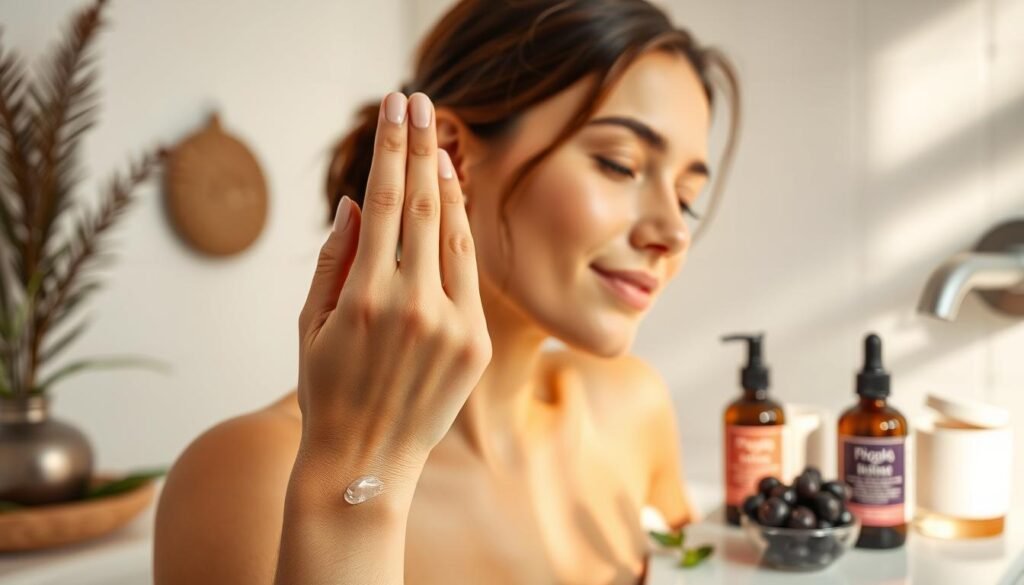
When to See a Doctor About Dark Spots
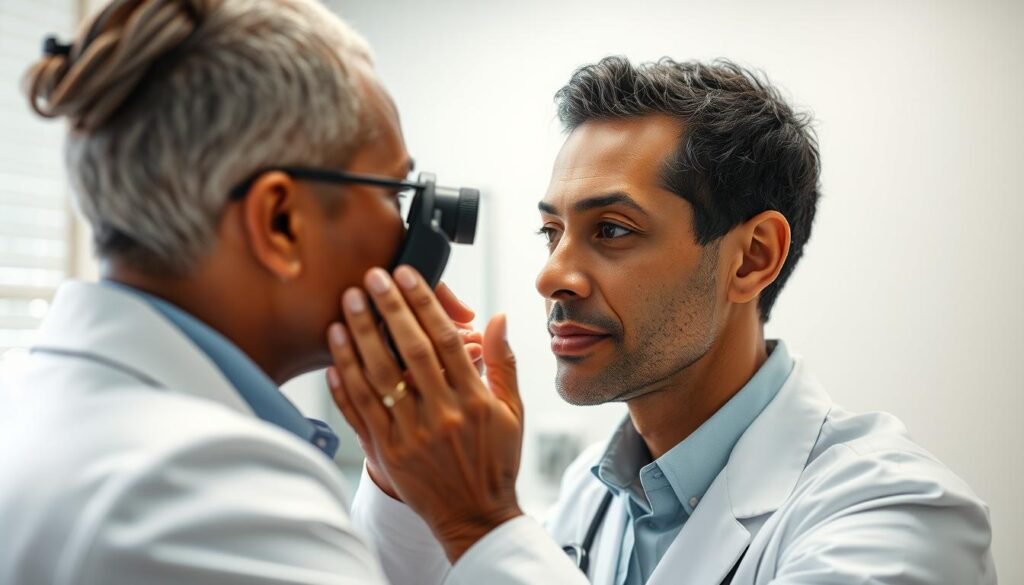
Understanding when to seek medical help for dark spots is crucial for your skin health. While many dark spots are harmless, certain characteristics warrant a doctor’s visit to rule out skin cancer.
It’s essential to consult a doctor if you notice any of the following: dark spots that appear suddenly, itch, tingle, bleed, or change color or size. Additionally, if home treatments and over-the-counter products fail to improve hyperpigmentation after 2-3 months, consider seeking professional evaluation.
Some key situations that require medical attention include:
– dark spots that change in size, shape, color, or texture over time,
– spots that appear suddenly, bleed, itch persistently, or have irregular borders,
– dark spots accompanied by other symptoms like pain, tenderness, or inflammation.
A dermatologist can provide an accurate diagnosis through visual examination and, if necessary, a skin biopsy.
Conclusion
Tackling dark spots on the skin requires a multifaceted approach that incorporates effective treatment options and preventive measures.
By understanding the cause and type of hyperpigmentation, individuals can determine the most suitable treatment plan, which may involve professional procedures or over-the-counter creams.
Consistent sun protection is crucial in both preventing and treating dark spots, and maintaining results over time.
While complete elimination of dark spots may not always be possible, significant improvement in their appearance can be achieved with patience and the right treatment strategy.

